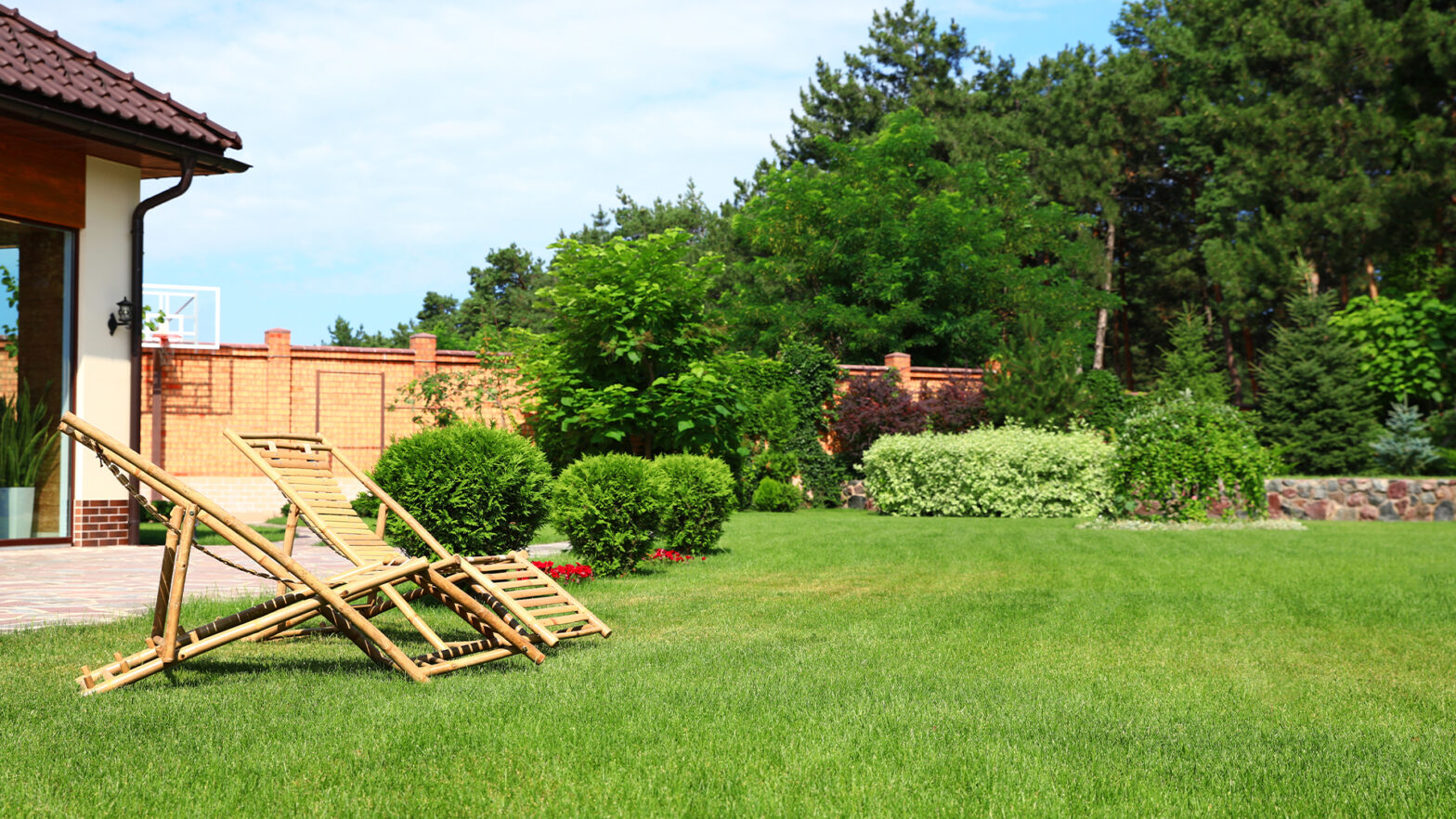
Are you dreaming of a lush, emerald green lawn that makes your neighbours green with envy? A lawn that feels soft underfoot boasts vibrant colour and requires minimal effort to maintain. It’s not just a dream! A healthy lawn is achievable, but it takes more than just the occasional mowing and watering. Many homeowners unintentionally sabotage their grassy havens with common mistakes. So, what are some common lawn mistakes to avoid in order to keep your grass healthy?
Below, gardening expert Oliver Johnson at HomeAdviceGuide.com has created this guide, explaining the most common lawn mistakes homeowners can make and how to prevent making these mistakes. Oliver also goes over some simple lawn maintenance tips to help ensure your lawn remains as healthy as possible.
1. Blind Seeding: Test Your Soil First
Most homeowners jump straight into planting grass, but a crucial first step is understanding your soil. Testing its pH level is vital. Grass thrives in slightly acidic conditions, ideally between 6 and 6.5. Amending the soil with lime if it’s too acidic can significantly improve your lawn’s health.
2. Scalping the Lawn: Aim for Height, Not Speed
Mowing your lawn too short is a recipe for disaster. While it may seem like a time-saver to keep it low, scalping stresses the grass, making it vulnerable to disease, drought, and pests. As a general rule, aim for a height of around 3 inches. This allows the grass to retain its top growth, staying strong and resilient.
3. Fertiliser Faux Pas: Choose Wisely and Apply Correctly
Fertilising can be a great way to keep your lawn healthy, but it’s all about balance. Using the wrong fertiliser for your grass type can cause damage. Additionally, applying too much or too little can be detrimental. Excess fertiliser can harm the lawn, while insufficient amounts render it ineffective. Applying fertiliser at the wrong time of year also affects results. Choose a fertiliser specifically formulated for your grass type and follow the manufacturer’s instructions for application rates and timing.
4. Blunt Blades: Sharpen for a Clean Cut
Dull mower blades are a sure-fire way to damage your lawn. They tear through the grass instead of cutting it cleanly, leaving jagged blades susceptible to disease and browning. Sharpen your mower blades at least twice a year to keep them in top shape and ensure a clean, healthy cut.
5. Overwatering: Let the Rain Do Its Job
Water is essential for a healthy lawn, but too much of a good thing can be disastrous. Overwatering leads to waterlogging, which stunts root development. If the weather is wet, your lawn may not need any additional watering at all. During dry spells, aim for roughly an inch of water per week to keep your lawn hydrated without drowning it.
.
6. Aeration Neglect: Breathe Life Back into Your Soil
Aerating your lawn regularly is crucial for healthy growth. Aeration allows water and nutrients to penetrate the soil more effectively, which is especially important for compacted or clay-heavy soils. You can achieve aeration by simply poking holes in the surface with a manual aerator or even a garden fork. For larger lawns, consider investing in a powered aerator.
7. Leaf Litter Blues: Rake Regularly to Avoid a Blanket of Trouble
Leaving fallen leaves on your lawn can spell trouble. As they decompose, they form a matted layer that smothers the grass underneath, hindering growth and promoting fungal diseases. Rake up leaves regularly to prevent this from happening. As soon as you see leaves accumulating, get out the rake and keep your lawn clear.
What Are the Best Ways to Maintain a Lawn?
There are many things you can do to ensure good garden maintenance and to make sure your lawn thrives.
- Keep on top of mowing – Perfecting your mowing technique is key to achieving a fresh and lush lawn. Raise the blade height slightly during the summer months (around 25mm) to provide shade for the roots and retain moisture. Lower it a touch (around 20mm) in spring and autumn to encourage thicker growth. Keep your mower blades sharpened regularly for a clean cut that promotes healthy growth and prevents ragged edges.
- Feed the lawn regularly – A spring feed with a slow-release, nitrogen-rich fertiliser specifically formulated for lawns will give your grass a good start to the season. Another light feeding in autumn with a fertiliser containing potash (potassium) will help strengthen the roots for winter. Avoid high-nitrogen fertilisers in autumn as they can encourage excessive growth, making the lawn more susceptible to disease. For a truly tailored approach, get your soil tested to determine its specific needs. This can help you choose the right fertiliser and avoid over-applying nutrients.
- Don’t forget to water – The weather can be unpredictable, so relying solely on rainfall is risky. However, avoid constant watering as it can weaken the roots. Instead, aim for a deep soak (around 25mm) once or twice a week during dry spells, especially during the summer months. This encourages the roots to grow deeper, making the lawn more resilient to drought. Water your lawn early in the morning or in the evening to minimise evaporation. Watering during the heat of the day can be wasteful.
- Remove weeds regularly – For a gentle approach, try using a vinegar-based weed killer on small patches of weeds. Be mindful, however, as vinegar can also harm surrounding plants. For stubborn weeds like dandelions, consider hand-removal. Dig them out completely, including the root, to prevent them from returning. Avoid using broad-spectrum weed killers, as they can harm desirable plants and beneficial insects. Choose a targeted spot treatment instead.
- Leave the clippings – Consider leaving some grass clippings on the lawn after mowing. They decompose, adding valuable nutrients back into the soil and creating a haven for worms, which contribute to healthy grass growth.































